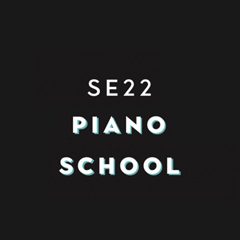Music Scholarship Seminar – Come and ask any questions you have about the application process for state or private schools.
22 July 2014 at 6.15pm:
http://www.eastdulwichforum.co.uk/forum/read.php?29,1354445
If you are applying to Secondary School for September 2014 entry, then you may be considering applying under the Music Scholarship program. This is available at many schools throughout London and the UK and up to 10% of the intake can be awarded a music scholarship. The scholarships are a two-stage process. The first involves a Music Aptitude Test (MAT) that is a multiple choice listening test. Students scoring 46/60 or higher are invited back to audition on their instrument(s).

The is a listening test for entry to state secondary schools on a Music Scholarship programme. All students sit the test at the same time. Answers are written on a multiple choice sheet. Students scoring in the top tier are invited back to audition. The exact marks required to progress to the second stage may vary depending on how all candidates score on the day.
We have created sample tests to use as training exercises. These have been produced following the guidelines below for the MAT. We have tried to produce tests as close to the actual test you will sit but of course there may be variation in the tests from year to year. We will review our sample tests yearly to ensure they are in line with the current MAT specifications. The MAT questions may vary from school to school but in our experience, we have found that the questions below are representative of the majority of tests.
The test consists of 60 questions of four types: Pitch, Melody, Texture and Rhythm.
Pitch: for these questions, candidates listen to two sounds and have to indicate whether the second sound is the same as the first, or whether it is higher or lower. There are twenty of these questions and some of the pitches are less than a semitone apart.
[youtube=http://www.youtube.com/watch?v=Oo7cUwOVyHU]
Melody: for these questions, candidates listen to two tunes consisting of five notes. Candidates have to decide whether the second tune is the same as the first or if one of the notes has been altered. If there is a change, candidates will be expected to identify which note has been altered, by giving the number of the note. There are ten questions in this section.
Texture: for these questions, candidates listen to a number of notes played together at the same time; this is called a chord. Candidates need to decide whether or not each chord has two, three or four notes. There are twenty questions in this section.
[youtube=http://www.youtube.com/watch?v=uqybv5h1yA0]
Rhythm: for these questions, candidates listen to two patterns of notes and have to decide whether the second pattern is the same as, or different from, the first, and where any difference occurs. Each rhythm will be four beats (or pulses) in length. There are ten questions in this section.
To find out more about the tests, visit our Music Aptitude web site.
